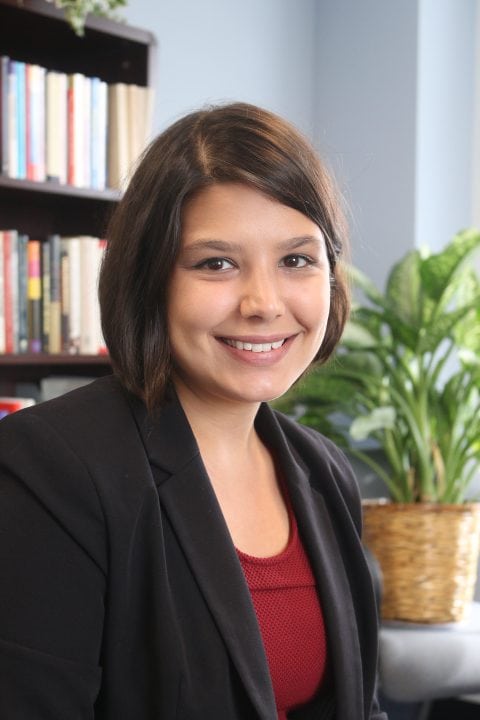For most young people in America, the path to adulthood isn’t undertaken alone. Parents and supportive networks often play a critical role by providing financial support, offering career guidance, and helping their children find a place to live.
For systems-involved youth, particularly young adults involved in the juvenile justice or foster care systems, this form of assistance isn’t always available. Too often, vulnerable youth reentering their community or exiting foster care must survive without the resources and support systems central to becoming successful adults. As a result, many experience serious hardships, including poverty, unemployment, homelessness, and dependency on government assistance.
However, difficulty transitioning into adulthood for justice-involved and foster youth is a solvable problem. In this post, three experts from the field share their recommendations for getting systems-involved youth on a pathway to long-term success.
The Need for Funding to Follow Youth
Systems-involved youth need quality educational services to complete high school and transition into postsecondary and employment opportunities. To provide young adults with the breadth of services necessary for success, youth-serving educational programs must be appropriately funded. As Darrin McCall, the Director of Programs at the Youth Empowerment Project (YEP) in New Orleans, Louisiana explained, funding can be a problem when Minimum Foundation Program (MFP) dollars do not follow young people who drop out or are pushed out of school.
For example, in the state of Louisiana, when a young person leaves the traditional K-12 education system, their federal and state MFP per pupil funding does not follow them to adult education or high school equivalency programs like those that YEP operates. As a result, organizations like YEP receive significantly fewer resources to deliver educational services to high-need youth between the ages of 16-21. In fact, during the 2017-2018 fiscal year, YEP’s adult education program is expected to educate students at a cost of $209 per student for the entire year, compared to the $10,556 that public charter high schools would receive in MFP funds for educating those same young people.
“It is near impossible to build and grow highly impactful programs that address the needs of vulnerable and disconnected youth with such limited funds,” said McCall. To address this problem, YEP is pushing for policy change in Louisiana that would allow MPF dollars to flow directly from the State Department of Education and follow young adults to state-approved adult education or high school equivalency programs.
The Value of Work
In addition to a quality education, systems-involved youth need opportunities to work and support themselves and possibly any dependent family or children. A recent study of the Civicorps high school diploma and paid job training program showed that foster youth proceed through the program and graduate at the same rate as other students. According to Alan Lessik, the Executive Director of Civicorps in Oakland, California, this finding is in part due to the program’s dual education and job training approach.
“Education and paid job training together provide the right incentives for systems-involved young adults… Youth who live on the economic edge cannot maintain themselves without earning an income.” – Alan Lessik, Executive Director, Civicorps
“Education and paid job training together provide the right incentives for systems-involved young adults. The first provides required literacy, numeracy, analysis and problem-solving skills. The latter allows youth to earn money and support themselves. Youth who live on the economic edge cannot maintain themselves without earning an income,” said Lessik.
Serita Cox, the Co-Founder and Executive Director of iFoster, expressed a similar sentiment about the value of work for these young people.
“By linking these young adults to gainful employment, foster youth can not only survive, but thrive and successfully transition to adulthood.” – Serita Cox, Co-Founder and Executive Director, iFoster
“By linking these young adults to gainful employment, foster youth can not only survive, but thrive and successfully transition to adulthood. That’s why we at iFoster have teamed up with a bipartisan group of lawmakers, including Senator Bob Casey (D-PA) and Congressman Dave Reichert (R-WA), to introduce the Improved Employment Outcomes for Foster Youth Act (S. 885/H.R. 2060). This bill would add transitioning age foster youth as a target population under the federal Work Opportunity Tax Credit (WOTC),” explained Cox.
According to Cox, if this bill is enacted, employers will be able to claim an annual tax credit for every youth they hire for up to ten years, opening up new job and career opportunities for youth in foster care.
YEP believes the United States can learn from federal workforce policy in Brazil to help justice-involved youth access employment opportunities. According to McCall, YEP recently participated in an international peer-to-peer learning exchange called (Re) Connecting Youth: Exchanging Global Lessons and learned about a policy in Brazil that requires major companies to have 5% of their workforce comprised of young people who are placed in apprenticeship roles. This policy has been critical to the expansion of Rede Cidadã, a large youth employment organization based in 47 cities in Brazil, that has helped place 63,000 young people into employment opportunities. In addition to ensuring that young people have many opportunities for on-the-job training and employment, businesses also pay Rede Cidadã for training and apprentice support. Due to this policy, 98% of Rede Cidadã’s annual budget comes from corporate partners, meaning additional fundraising is not as imperative to keeping their organization operating.
“Looking at federal, or even state or local policy similar to this could help ensure vulnerable or disconnected young people have access to ample employment opportunities and that youth-serving organizations receive the necessary funding sources to provide high quality employment training programs,” noted McCall.
The Importance of Second, Third, or Twelfth Chances
Finally, education, job training, and employment opportunities are critical for putting systems-involved youth on a path to long-term success, but that can be a winding path, and young people might need a few chances to find their way. The Civicorps study also found that foster youth have greater numbers of program exits and reentries than other students before they graduate.
According to Lessik, “this in and out allows them to meet pressing needs and make incremental changes in their life without having to give up on their goals.” Programs with a ‘one-strike policy’ that don’t allow for multiple chances to succeed might be setting systems-involved youth up for failure. Requiring adherence to strict program requirements and timelines without any breaks might not be realistic for systems-involved young adults who may have an array of other responsibilities that need attention.
Providing systems-involved youth with high-quality and appropriately resourced education and training, opportunities to work, and the flexibility to make progress on their education and employment goals at their own pace is critical for helping these young people successfully transition to adulthood. To learn more about how YEP, Civicorps, and iFoster are supporting youth involved in the juvenile justice or foster care systems, check out AYPF’s recent webinar, Promoting Pathways to Long-Term Success for Systems-Involved Youth.




